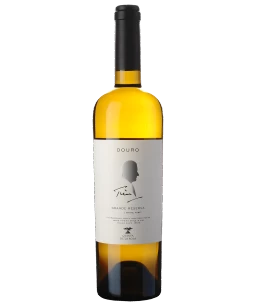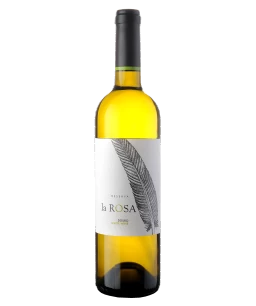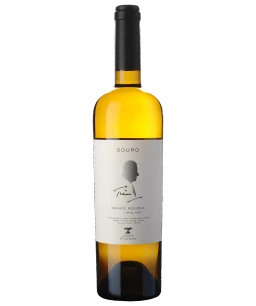Quinta de la Rosa
Portugal and England have engaged in wine trading since the 14th century. Over the course of time, the British also settled in Portugal, establishing agricultural estates (quintas) to grow wine, and founding large trading companies in Porto. The Bergqvist family are descendants of these settlers, still involved in production and trade on the strength of innovative ideas and great commitment.
Quinta de la Rosa is headed by Sophia Bergqvist. She is the granddaughter of Claire Feuerheerd, who received Quinta de la Rosa as a christening gift from her English grandmother. Sophia's father, Tim Bergqvist, took over the management in 1972, after Claire Feuerheerd’s death. The quinta experienced some turbulent times – the depression in the 1930s, the Second World War and difficult times in the 1960s. When the Portuguese revolution broke out, the temptation to sell was great. But Sophia's mother, Patricia, spoke out strongly against this move.
With Portugal’s entry into the European Community in 1986, both father and daughter decided to join forces to make Quinta de la Rosa one of the leading independent producers of quality port wine. Very soon afterwards, Quinta de la Rosa became one of the first to also bottle dry Douro wine. Today, not only can you find their excellent port wines in the best wine shops, hotels and restaurants all over the world, but also their extraordinary dry white and red wines. The La Rosa White Wine Reserva, for example, surprises with its mineral freshness, complexity and length, standing toe to toe with top Burgundy wine.
The Douro Valley is also a fantastic travel destination. Quinta de la Rosa offers visitors charming rooms, equipped with all the modern comforts. In summer 2017, they opened the Cozinha da Clara restaurant, which serves Portuguese dishes and recipes handed down from grandmother Claire. www.quintadelarosa.com
White wines from Quinta de la Rosa
Red wines from Quinta de la Rosa
South wines from Quinta de la Rosa
from Quinta de la Rosa
The Quinta is located in the Alto Douro, about 130 km from the picturesque seaside town of Porto, outside of the charming provincial town of Pinhão. Here beats the heart of the pulsating Douro valley, and of the protected growing region for Porto, which was established in 1756 and which is now a UNESCO World Heritage Site. All vineyards are classified as "A" (the scale ranges from A, at the top, down to F), and are located in very steep areas with slopes of up to 60 degrees and slate soils. The oldest were planted in 1930 with mixed vines which was common at the time. On the narrow, old terraces made of dry-stone walls, the Socalcos, or the broader, more modern Patamares, the Touriga Nacional, Touriga Franca, Tinta Barroca, Tinta Cão, Tinta Roriz and Souzão reds, as well as the Viosinho, Gouveia, Rabigato, Códega do Larinho and Malvasia Fina whites are grown. The climate is continental with cold winters and very hot summers with temperatures often above 40 °C and about 400 millimetres of rain per year. The vines are cultivated according to the guidelines of integrated production and the production is certified. All of the work is done by hand, as mechanisation is hardly possible. The winery is owned by the Bergqvist family and is managed by Sophia Bergqvist. The prestigious oenologist Jorge Moreira has been working by her side for many years. The grapes for port wines and Reservas are always trodden traditionally by foot in the granite basins known as Lagares to the sounds of loud music from the radio or live folk songs. Both the dry wines as well as the ports get high ratings from international wine institutions and critics. The Douro Valley is certainly worth a visit. Quinta de la Rosa offers a tasteful and pleasant place to stay for guests, as well as a small restaurant with a fine selection of local delicacies. www.quintadelarosa.com
Producer
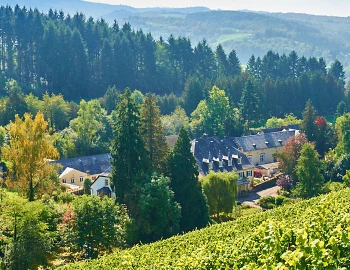
Karthäuserhof
The Karthäuserhof - The cradle of world-famous Rieslings, ever since 1335.
The Karthäuserhof is a magical spot. Not just because of its idyllic location but also because it is the eighth oldest winegrowing estate in the world and for centuries the cradle of world-famous Rieslings. It was founded in 1335 by Carthusian monks who received the estate as a gift from Prince-Elector Balduin of Luxembourg and operated it as a winery until secularisation. Since 1811 the Karthäuserhof has been owned by the same family, now in the seventh generation.

Weingut Polz
The family vineyard of Erich Polz is situated in an idyllic field in the middle of hilly Southern Styria, about an hour’s drive south of Graz. The business was originally founded in 1912. In the late 1980s, the brothers took over their parents’ vineyard. Christoph Polz, Erich’s son, became the fourth generation to assume the role of winemaker in 2011.
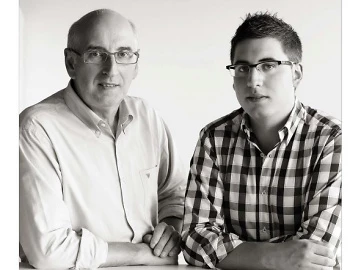
Bodegas y Viñedos Artadi de Laguardia
In Rioja Juan Carlos López de Lacalle, oenologist and founder of the Artadi group, has succeeded in making unique wines in an exciting and creative way. This is not least thanks to a distinctive style and his passion for environmentally friendly viticultural methods, which guarantee the future of winemaking and the authenticity of his wines.

